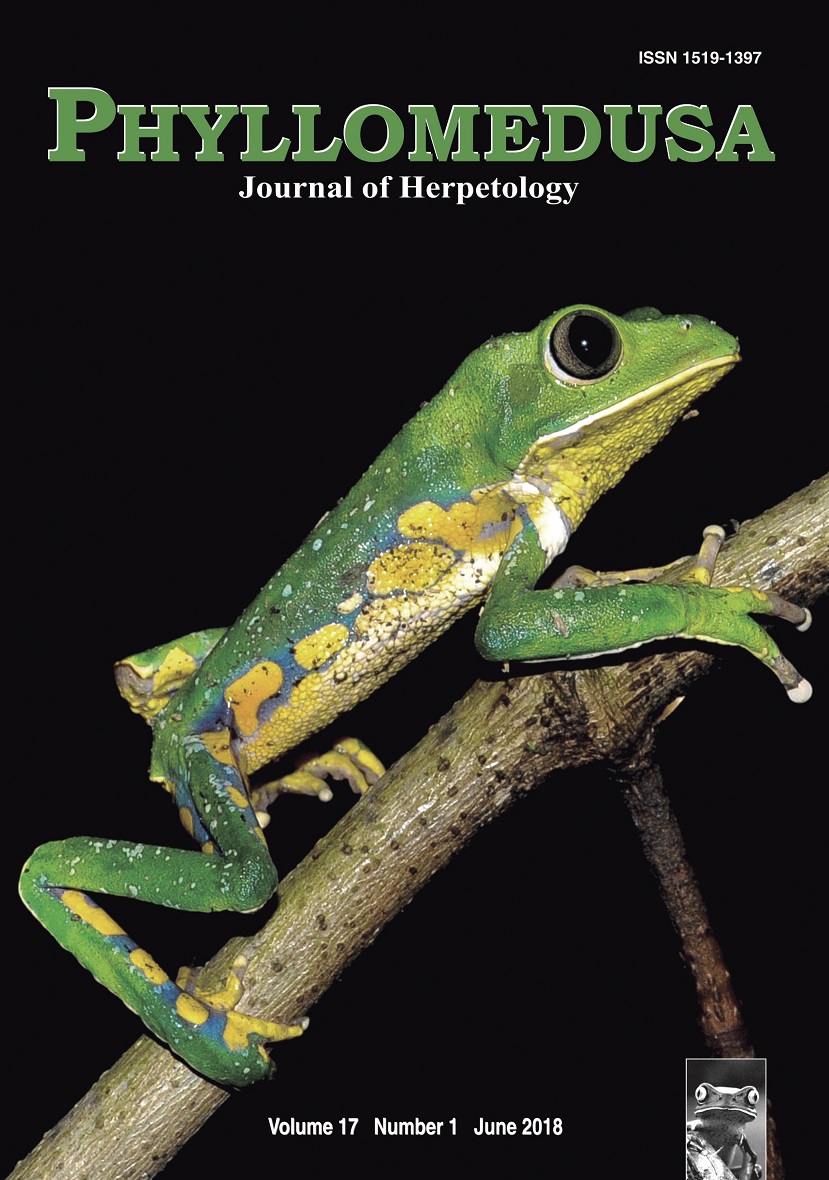Escape behavior in gravid and non-gravid females of Gonatodes albogularis (Squamata: Sphaerodactylidae)
DOI:
https://doi.org/10.11606/issn.2316-9079.v17i1p73-81Keywords:
behavioral compensation, escape theory, escape behavior, predation risk.Abstract
Escape behavior in gravid and non-gravid females of Gonatodes albogularis (Squamata: Sphaerodactylidae). Theoretical models of predator-prey relationships describe tradeoffs between energetic and other costs of escape, effectiveness of escape behavior, and predation risk. These models predict that an animal will fee when the expected ftness cost due to risk of predation becomes equal to the the cost of the escape or post-encounter ftness is maximized, depending on the model. In this framework, several individual and ecological variables have been shown to affect escape patterns, but the effect of reproductive status has been studied in few species. We assess differences in escape behavior between gravid and non-gravid females of Gonatodes albogularis. Lizards were surveyed by applying a free search method along independent transects. For each lizard, we determined reproductive status as gravid or non-gravid and recorded several variables related to escape behavior. We made a discriminant function analysis to see whether the state of individuals affect escape behavior. Our results show that the escape variables distance fed, the fnal distance and the distance to refuge differ between gravid and non-gravid females. These fndings support predictions based on risk and cost, but do not support models of fight initiation distance. Such differences could be related to a physiological process known as behavioral compensation, through which some individuals (gravid females in our case) modify their behavior to offset predation risk. Further studies are needed to see if behavioral compensation can be explained in terms of adaptive processes in G. albogularis.Downloads
Download data is not yet available.
Downloads
Published
2018-06-26
Issue
Section
Articles
License
All material originally published in Phyllomedusa belongs to Escola Superior de Agricultura Luiz de Queiroz - Universidade de São Paulo. All contents are under a license of Creative Commons BY-NC-ND.How to Cite
Domínguez-López, M. E., Kacoliris, F. P., & Simoy, M. V. (2018). Escape behavior in gravid and non-gravid females of Gonatodes albogularis (Squamata: Sphaerodactylidae). Phyllomedusa: Journal of Herpetology, 17(1), 73-81. https://doi.org/10.11606/issn.2316-9079.v17i1p73-81



 Impact Factor (JCR): 0.600
Impact Factor (JCR): 0.600 CiteScore: 1.0
CiteScore: 1.0